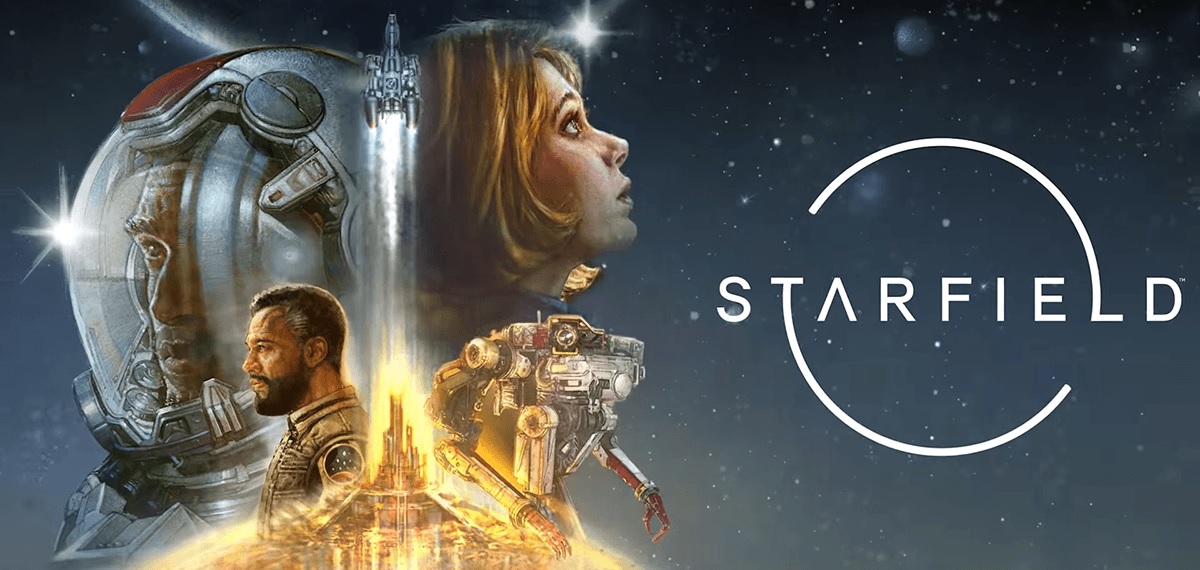Starfield
Developer: Bethesda Game Studios
Publisher: Bethesda
Platforms: PC, Xbox Series X (Reviewed)
Release Date: Available Now
Price: $69.99 USD – Available Here $119.95 AUD – Available Here
Overview
When it comes to Bethesda Game Studios, fans have come to expect certain things as the company made their debut with Morrowind back in 2002 and have managed to produce countless successes through the years, making use of The Elder Scrolls and Fallout franchises to craft open worlds with incredible amounts of content for players to explore their own way, delivering an RPG experience unlike anything other developers have been able to offer. Now, over twenty years past their first release, the development team has produced their first original offering in the form of Starfield, promising a galaxy at players’ fingertips. Is this endeavor successful and is Starfield truly a Bethesda game unlike any other?
Story
Players take on the role of a deep-space miner, working at a dig site like any other and using their laser cutter to mine resources for what seems like a standard job. Players can build their character background to offer various unique perks or story elements throughout the game but, regardless of these choices, everyone starts here as a miner. After being sent to mine a particularly unusual part of the dig, players discover a strange “artifact” affecting the gravity around it in unusual ways and, upon touching it, find themselves experiencing unique visions unlike anything ever experienced by human kind. When word of this artifact and the player’s subsequent vision and collapse, they quickly find their world expanding as the legendary group known as Constellation looks to recruit them to their team.
The core storyline of Starfield is a fascinating one in a couple of ways but primarily because it feels like the perfect set piece to help introduce the player to the galaxy at large and let them off their leash, free to wander from planet to planet and faction to faction taking on any missions that may interest them. The main storyline does involve some major revelations and features players uncovering new mysteries of the universe with some rather significant implications that go far beyond anything Bethesda has previously teased for the game and we won’t spoil it here. Along these same lines, the main storyline also feels like it is only the tip of the iceberg since, as mentioned before, the world, or more fittingly worlds, Bethesda has crafted here feel like a grand tale that can continuously unfurl the deeper players dig into a location with new storylines and moments of intrigue appearing around nearly every corner and in some rather surprising locations as well, meaning that players can easily spend over sixty hours of the game barely scratching the main storyline if they so feel like and still find countless more to explore.
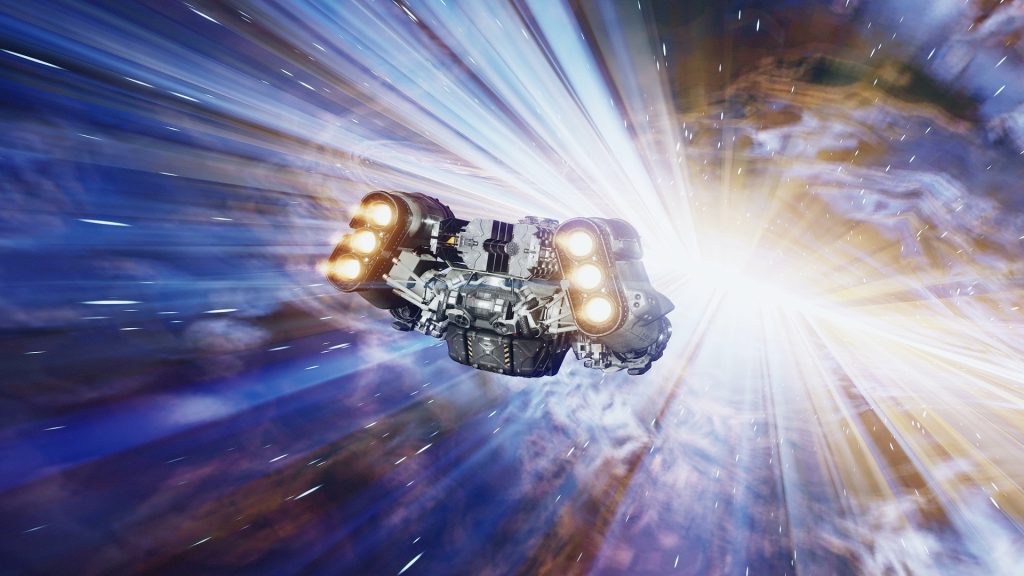
The world of Starfield is also fairly reactive to some of what players do. Sure, stealing random items and getting a bounty on your head may not have long lasting effects outside of drawing fire from security for a respective faction but completing various quests and their outcomes will play into other events that will happen down the line. For example, after obtaining a spaceship once used by a legendary pirate that hunted other bandits, my ship would occasionally strike fear into pirates when jumping into a system, causing them to flee in terror or rally and try to fight back harder, even calling in for back-up at times. Swapping to another ship saw this come to an end but it remains within my fleet and a readily accessible vehicle should I need a smaller speedy fighter. Along these same lines, a mission involving saving a group of scientists protected by rival security factions doing battle with spacers (pirates) saw myself encountering leaders of both security groups in other systems down the line, hearing words of praise for my actions in helping the settlers and them in their plight. Sure, most of these decisions often boil down to simply killing a target or even talking them down with persuasion but these choices do end up playing a role in how stories and events play out and will have consequences. In fact, even trying to backpedal on an earlier conversation that saw my character talk poorly about a rival and try to convince the boss that he was worthwhile saw the boss not taking my attempts seriously, choosing to still kick the guy out thanks to my earlier claims.
The way storylines and content unfolds in Starfield is fascinating. The smallest sounding task can quickly become a massive multi-hour journey involving multiple quests that can take players all over the galaxy, experiencing new events in these locations as well. I could go on for quite some time about how grand in scale some of the content in Starfield can become. Warping into a system with a collection of allies on my tale ready to destroy a fleet of cultists, boarding a ship with a party ready to take down a group of pirates, or even raiding a derelict ship only to discover that it was previously used for xenomorph experimentation with human organ harvesting as a side-job. Many of the worlds that players explore may not have the most interesting storylines in the grand scale, especially the simpler worlds where players can randomly land anywhere and generate caves, buildings to explore, and unique flora and fauna to scan, but most of them have at least something interesting to uncover should players feel like looking, offering more content than anyone could imagine in a single playthrough let alone a game changing New Game+ mode.
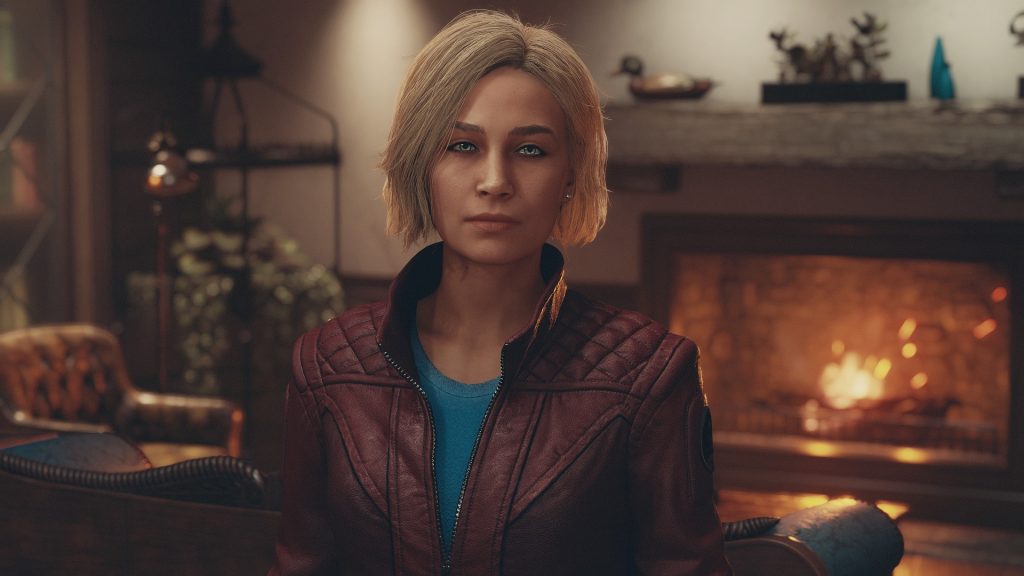
The breadth of the content in Starfield is stunning and it all is handled with some rather solid lore and world-building. Various elements of the galaxy’s history and conflict among the stars is explained sufficiently and even the companions that players can gather, story related and crew that they hire, also have their own backstories. The actual relationship systems with these characters is a bit on the simplistic side and it would have been great if there were more actual companions besides the small amount available, as well as a bit more variety in the type of crew that players can hire to man their spaceship and outposts. Being able to hire some of the more rougher and tumbling members of a faction would certainly make things more interesting at times but even then, the characters on offer are fairly well-fleshed out, though it is a bit disappointing that players can only have one companion with them at a time outside of quest reasons, especially when traveling and exploring worlds with allies and friends that players have made in their grand adventures is always an exciting endeavor, especially when you never know what the next planet might hold, a feeling that very few games, even those from Bethesda’s own storied library, can offer.
Gameplay
With so much interesting content to explore, it is great to note that, for the most part, Starfield plays in similar fashion to what one would expect from a Bethesda Game Studios title as all exploration can be handled in first person, with a third-person camera being an option should players choose, and a massive array of weaponry to use ranging from standard guns, shotguns, etc. to laser rifles and more elaborate firearms and even a few melee weapons. Firefights on the ground with enemies feels fitting enough, though don’t expect the type of tight and snappy controls found on an FPS as Starfield is still an RPG at heart and while the gunplay may feel a bit better than their recent Fallout entries, it still isn’t quite up to a standard FPS level.
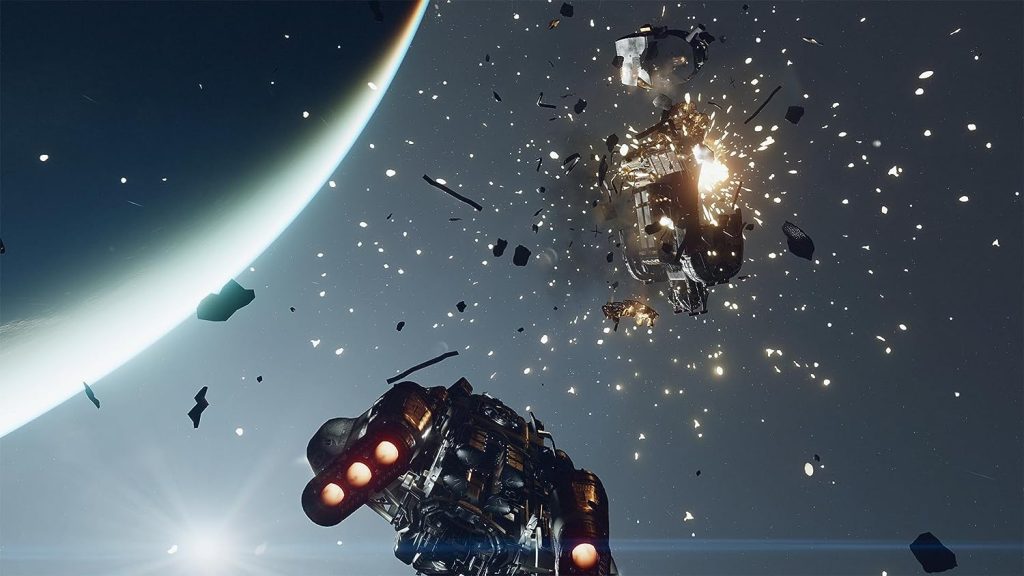
The worlds of Starfield are filled with a massive amount of stuff to pick up and gather, some of it useful and most of it not and while players can still move at a normal pace when overencumbered, they will expend “O2” faster and cannot fast travel meaning players will need to be a bit on the selective side when it comes to looting everything that isn’t nailed down. O2 is a replacement that usually just dictates how long players can run for at a time with fully expended O2 causing a buildup of CO2 and triggering a small amount of damage. Players can also make use of their “boostpack” to jet around for brief periods of time while jumping with planets having less gravity allowing players to really take to the skies in a fight, though running around on a planet with heavier gravity will expend O2 faster.
One of the most enjoyable elements of combat in Starfield is when players are in space as the spaceship combat is a delight, as long as players make sure to keep their ship upgraded and unlock a certain nearly required skill. As players take part in interstellar dogfights they will need to manage their reactor level by distributing power accordingly, decreasing their engine output to put more energy into the cannons for example, in an interesting and intuitive way. It must be said though that players should almost immediately obtain the “Targeting” skill that allows players to lock-on and target specific enemy ship parts as not only can this allow players to specifically take out an enemy ship’s engines to try and board them, it also can be used to disable a far superior ship’s weaponry, leaving them weaponless and easy for the picking.
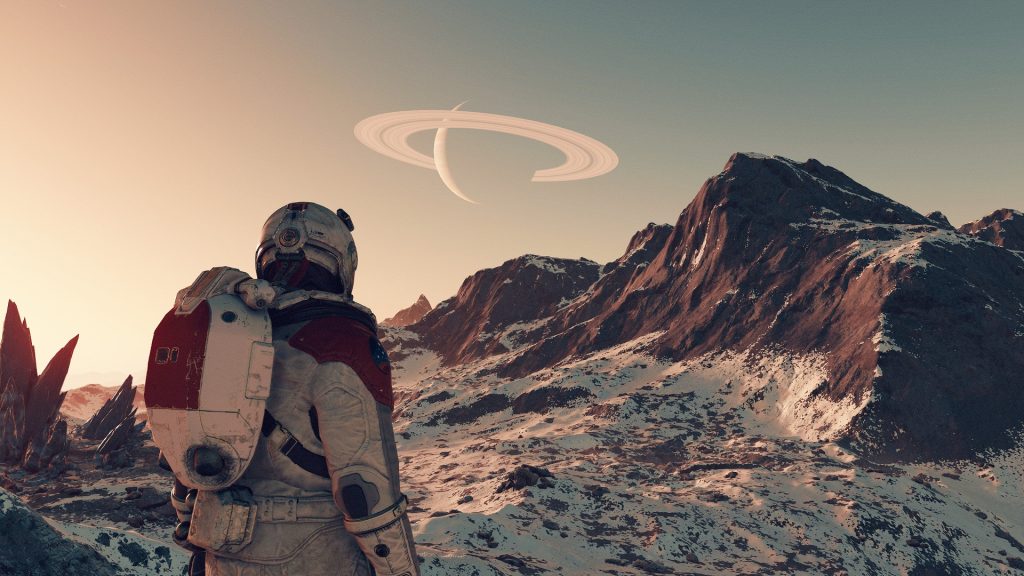
The ship building itself is an incredibly intricate process that does have a few limitations but not too many. Players can only have one shield generator, warp drive, etc. for their ship but otherwise the sky’s the limit as to player creativity. Customizing a ship with unique parts and swapping out their types will change the inside of the player’s ship as they travel through it, interacting with their crew and offering such an interesting level of depth. Those afraid of tackling this can choose to simply purchase part upgrades or spend a decent chunk of change buying ships available throughout the many spaceports in Starfield or, if they feel up to it, stealing a ship by boarding it and killing the crew.
Exploration in Starfield is a bit more on the limited side then some may think at first as it isn’t entirely possible to simply fly from location to location. Instead, players will warp jump from system to system, choosing to land anywhere they want on most planets and exploring the worlds on foot. These worlds can then be populated by plants and animals that players can scan and harvest for resources, even setting up customizable outposts that they can use to drill for resources within the planet itself and using it as a base of operations should players really want to get in-depth. This can lead to a lot of quick travel at times between missions as players jump rapidly from location to location but those who really want to explore can still find plenty to search through should they feel like it, just don’t expect to fly to Mars from Neptune in a straight line.
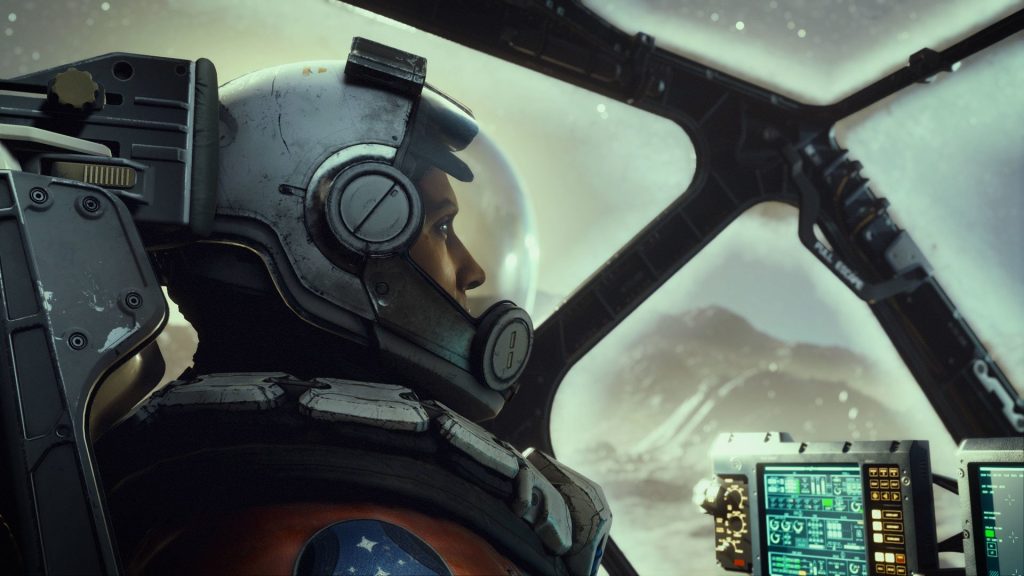
Leveling in the game can also be a bit of an odd bag, not because leveling is unusual, it isn’t. Players will gain XP for completing missions, killing enemies and animals, scanning resources, etc. and every level up provides a skill point. Where to use these skill points is where things can become a bit more difficult as Starfield has broken the skill system down into a massive list of unlockables that range from near useless to incredibly vital as they keep main mechanics behind them. This includes the aforementioned Targeting for spaceship combat, stuff like having an actual stealth meter for sneaking around or being able to pickpocket people, crafting basic upgrades to equipment, or even using your jetpack. Some of these are simple tier one upgrades and every skill can be upgraded further, using a skill point to do so once player’s complete their subsequent challenge such as being able to pilot more advanced spaceships by destroying countless enemy crafts in combat. There does not appear to be a level cap of any kind in Starfield but it does mean that players will need to balance their needs as often many skills will be vying for their attention with every level up they obtain.
It wouldn’t be a Bethesda Game Studios game without bugs and, while we didn’t experience many small issues with Starfield, outside of the occasional physics bug or getting stuck in a bit of flooring, there were some larger issues that cropped up. Making use of a conquered pirate ship that I had registered as my own eventually saw the ship glitching into non-existence, freezing me in space or vanishing from the landing pad, forcing me to discard the powerful ship and return to my starter one at the time and, to a much worse degree, a completely missing main story quest that refused to appear and required reloading an incredibly old save, losing nearly ten hours of progress simply to have the quest appear like normal and unlock perhaps the most interesting and vital questline in Starfield’s main storyline. These issues will likely be addressed through patches but remain a problem players will need to watch out for in the game.
Audio & Visuals
For the most part Bethesda’s take on space in Starfield is a more grounded one. Player will travel in spaceships filled with technological marvels but nothing too beyond the stretch of the imagination while also visiting cities that span the wide-range of futuristic paradises to wild-west towns barely hanging in there near the edges of settled space. The worlds themselves are fairly diverse though players will find that many of them are simple lifeless worlds filled with resources and a few odd anomalies they can track down and not much else. The character models are decently designed with some odd looking NPCs here and there, though it would be nice to see more character variety for the party members once again. It is also worth noting that the alien wildlife that players encounter and fight can be rather terrifying at times as there are some truly creepy looking creatures to discover and whether these are random, or placed by Bethesda, is unknown but also incredibly interesting for variety’s sake.
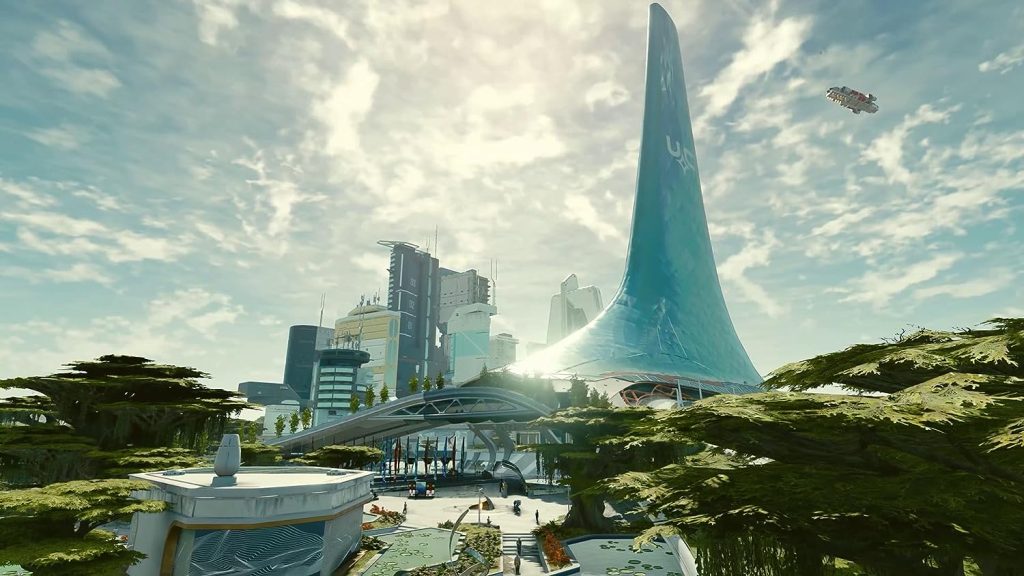
The voice work throughout Starfield is handled incredibly well with plenty of unique ambient dialogue that changes as players complete quests while all conversations are voiced by a wide sounding variety of actors. The player character is thankfully not voiced, giving players plenty of opportunity for unique dialogue choices that will have some surprising results at times. The soundtrack features a rather impressive collection of music, with some truly great sounding pieces of background music during exploration and combat though it would be nice to have some sort of in-game radio to listen to when traveling through a more lifeless world or delving into a ruined outpost or derelict ship.
Overall
Starfield is a massive game unlike anything that has come before it. Players can spend hours upon hours simply traveling through space, visiting worlds and seeing what they may find on them. Sure, most may simply have resources and unique creatures to discover, but there are countless others with storylines and quests that just continuously unfold, making players wonder why their quick pit stop at a resort planet turned into a multi-hour adventure. With a wide scale of mechanics and depth to take advantage of, Starfield may have some issues throughout its design and a fair share of problematic bugs, though still feeling a bit more polished than average for a Bethesda title, Starfield’s galaxy is one that begs to be explored and feels like a truly shining example of what a developer can do when given enough time and a big enough vision.
Capsule Computers review guidelines can be found here.


